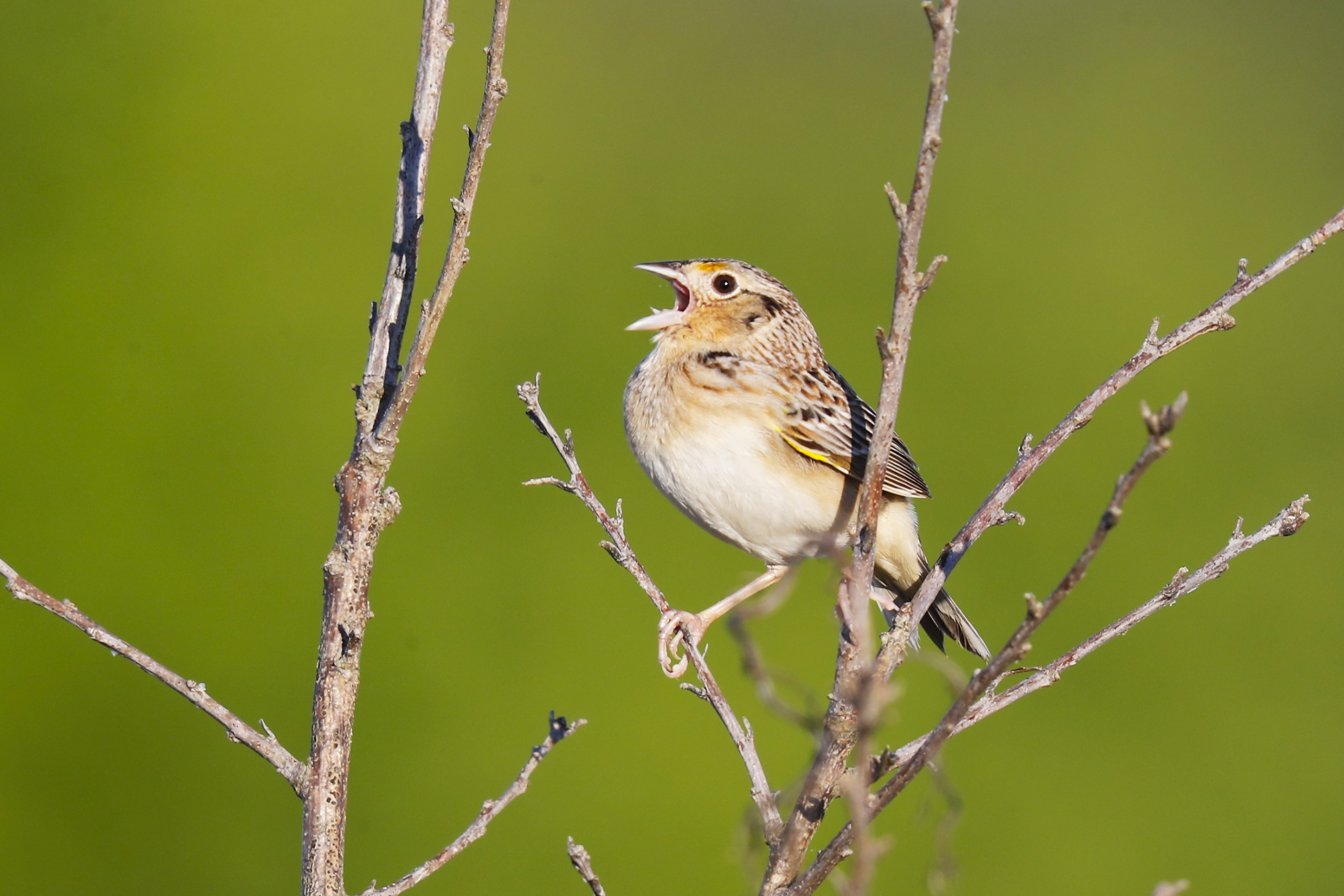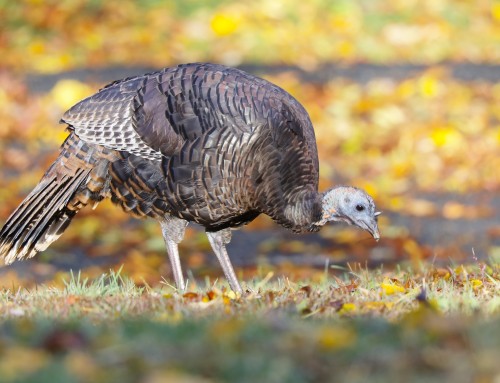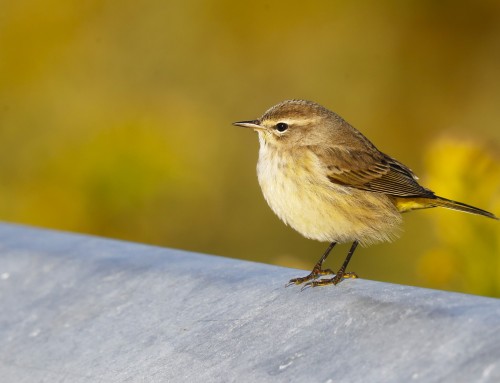Aug. 22, 2025: During the summer months, Grasshopper Sparrows perch on the top of shrubs and snags to project their insect-like songs. Elevated singing helps defend their territory, and stay vigilant against predators, while concealing their ground nests in grassland habitat. This sparrow was recently seen at the Crane Wildlife Management Area in East Falmouth.
In Falmouth during the summer, a Grasshopper Sparrow will often leave its hidden position on the ground in open grassland and move to a perch, such as a low shrub, fencepost, or weathered tree snag that rises just above the surrounding grasses. This elevated spot is carefully chosen:
- Visibility: The perch gives the sparrow a clear vantage point across its territory, allowing it to keep watch for rivals, mates, and predators.
- Sound projection: Singing from a higher, unobstructed perch helps its buzzy, insect-like song carry farther across the grassland, maximizing the chances of being heard by females and warding off competing males.
- Predator awareness: Sparrows are ground-nesters, so climbing to a perch provides a safer position to vocalize without immediately revealing the nest’s location.
Once in position, the male will lift his head, puff out his throat, and deliver his short, trilling song, often compared to the sound of a grasshopper. This behavior is central to summer breeding activity: it serves both to establish and defend territory and to attract a mate.







Leave A Comment
You must be logged in to post a comment.